Player retention is almost every game developer’s universal goal, especially from a gaming business perspective since the longer you can retain your players’ attention in your game the more likely you can increase their average life-time value.
This is especially true in the mass adoption of the F2P (free to play) model drives more than 85% of all gaming revenue:

So let’s go over the 17 different strategies and tactics game devs use to retain their players’ attention, which will fall into one of these two categories:
- Gameplay value added retention strategies focused on improving the actual player experience.
- Psychology-driven tactics that only work with games that are already engaging and rewarding in their own right.
(There most likely will be more than 17, so if you know any worth adding to the list, please share in the comments below)
Let’s first go over the value added retention strategies. These are all about improving the actual gameplay. Even the most brilliant marketing campaign or psychological trick can’t save a game that isn’t fun and engaging on its own.
1. Write a compelling, expandable narrative
One of the best ways to retain players is through meticulous narrative design.
This works especially well for players who enjoy narrative fun the most:

An engaging, detailed story can always draw players back in—like re-reading your favorite book even though you know exactly what happens:

Storytelling has been humanity’s chief form of entertainment for longer than anyone can remember (because our cultural memory starts with our first stories). Some of the most memorable experiences in games are really just moving stories told through a newer medium.
Final Fantasy is one of the earliest adopters here, borrowing narrative structures from books, films and plays even back in the ‘90s:
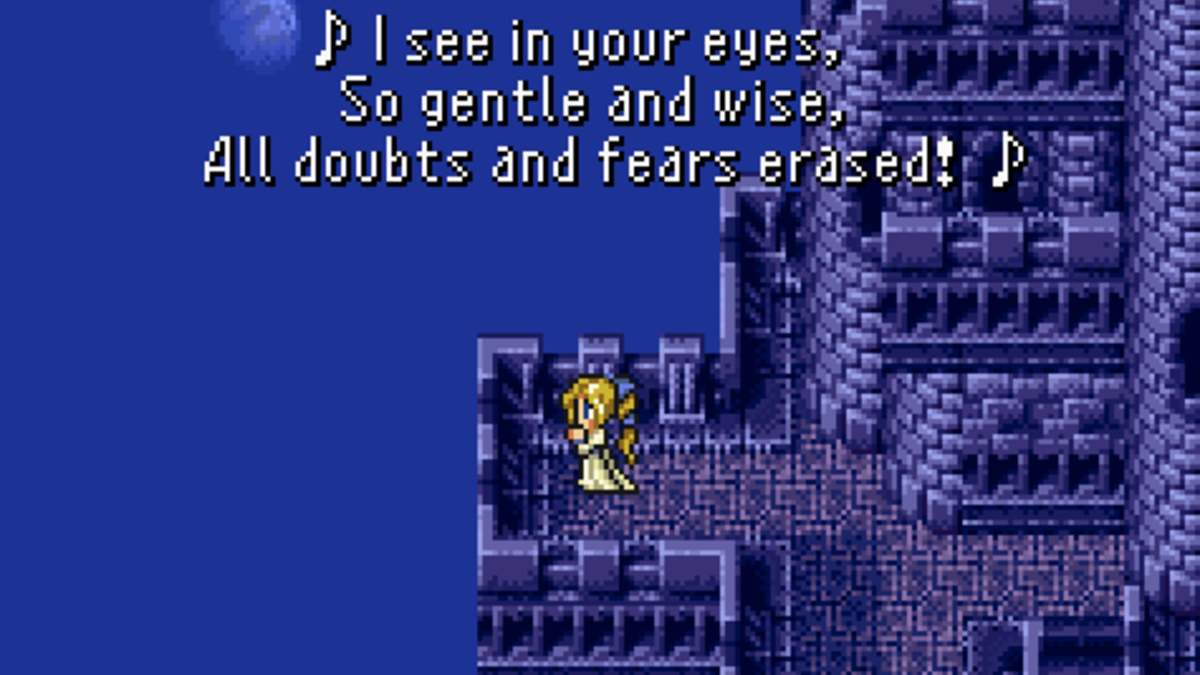
The seemingly endless legacy of Final Fantasy 7 isn’t thanks to its graphics, mechanics, or any famously challenging sections; it’s the story and characters. Being able to put yourself in their blocky little shoes is what allows games like this to cement themselves in our minds.
That’s why that one part is so effective—we’ve all experienced sudden, inexplicable loss before:

Narratives are also useful because they don’t require a pre-defined endpoint.
Is anyone praying for the end of One Piece? Were we in a hurry to be done with Game of Thrones? (Okay, I am, but apparently their audience isn’t…)
The promise of an unfinished story can pull players along even through long wait periods. Cliff hangers and open story loops keep audiences waiting with bated breath for the next plot update.
FF14 famously did this with Endwalker, which finally concluded its main storyline:

It’s not easy, but if you can create a cast of uniquely lovable characters with clear goals and obstacles, you can often stretch out their adventures for years and years.
Caveat: Don’t let the story overstay its welcome.
The fans can always tell once it’s starting to feel forced. Especially with expandable narratives, it’s critical to be able to identify when most of the creative juice has been sucked out of an idea.
Any sort of FF7 remake once seemed like a dream, but even something highly anticipated can’t escape the risk of becoming oversaturated. It’s happened before, and it’ll happen again.
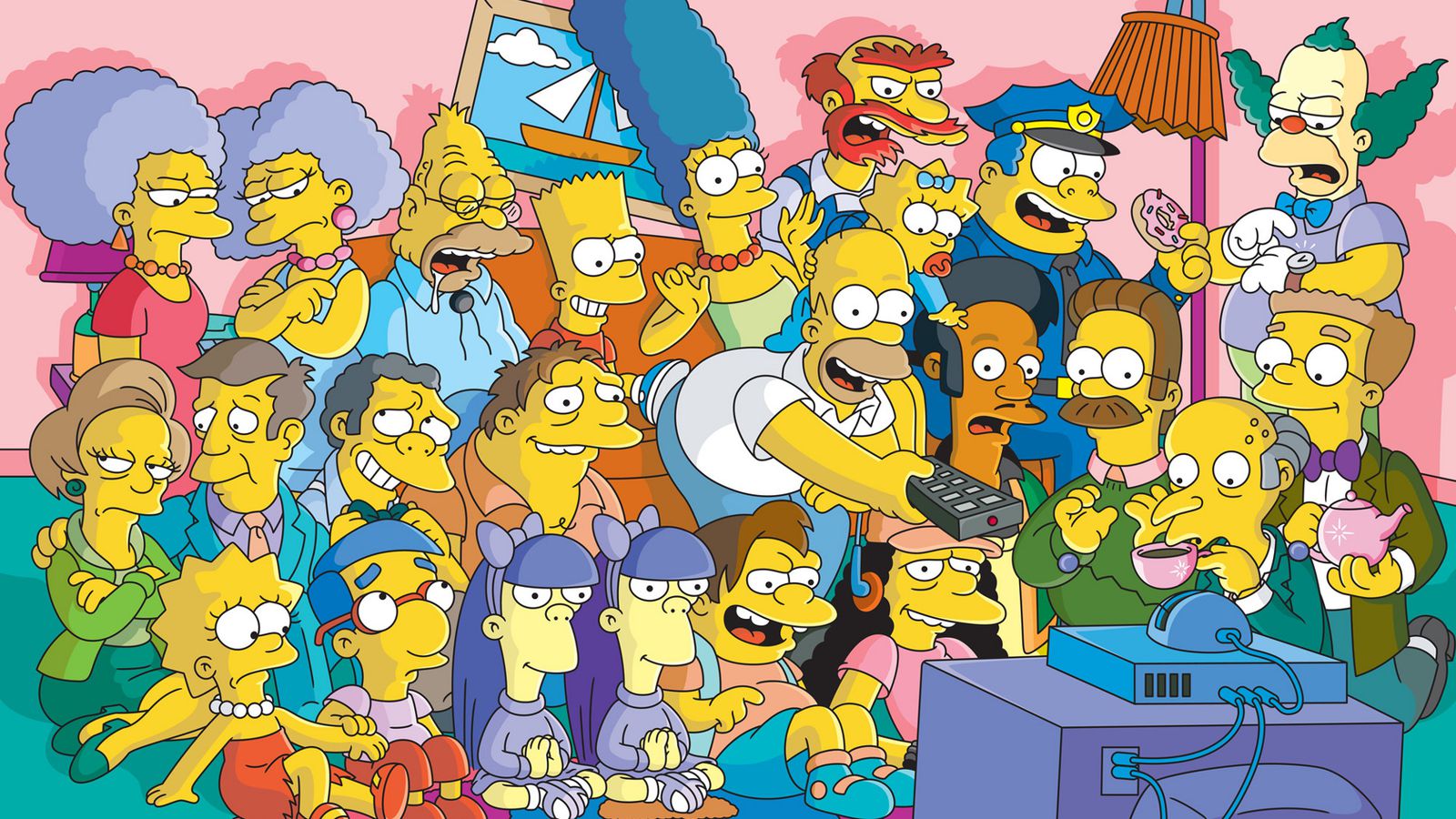
Plus, ending nobly before 100% of the potential profits have been extracted might make it easier to revisit that world later, once a healthy amount of time has passed.
2. Add PvP modes
Adding PvP (player versus player) to a game means that its difficulty can grow as high as the strongest player’s ability.
When players have finished the main game and want a greater challenge, the natural next step is to seek out others with the same achievements. Those who love extending their mastery of the game’s mechanics will get the most out of this feature.
This is why PvP combat is the best way to grow as a player. You’ll hone your skills fastest against a human opponent who’s actively trying to make you lose:
Some PvP modes offer balancing options to ensure players aren’t matched with much higher-level or more experienced opponents—like Elden Ring’s colosseums:

These colosseums are spread out across The Lands Between, providing different PvP combat modes that allow the player to:
- Explore the PvP mechanics throughout the entire game’s progression in single-player mode.
- Try them out optionally, as they aren’t part of the game’s critical path.
- Compare their constellation of equipment, abilities, and battle tactics against an unpredictable opponent (truly, “man is the most dangerous game”…).
Caveat 1: Another plus for PvP modes—which can vary incredibly by genre—is that they tend to not require a ton of extra content.
When PvP isn’t the primary mode, it’s viewed as a way to test out the skills players develop during the main game. If this new mode is too different, it becomes a test of adapting to that specific style of gameplay, rather than comparing each player’s overall mastery of the game.
So, reusing existing abilities, art assets and animations is often completely acceptable when adding a PvP mode.
Caveat 2: Don’t force PVP into a game that isn’t built for it. Some games just aren’t structured around PvP combat, so it won’t work in every scenario.
For example, I witnessed first-hand the consequences of poor PvP implementation when I worked on World of Warcraft—in the Arenas:

The feedback was fairly clear on r/mmorpg:

Even Elden Ring’s arena modes initially constrained and damaged the overall experience of the PvE elements, until the team decided to make separate rules for those modes.
3. Use balance patches to keep making adjustments
Some games only lose players’ attention because they feel the game is unfair, which can take many forms…
- An FPS with one gun that’s too powerful/fast/easily accessible
- Fighting games with absurdly strong characters that becomes overcentralized
- An otherwise well-balanced RPG with one unreasonably difficult area or boss
- Platforming sections that demand precision of you, but not the game’s control scheme (looking at you, Souls games)
Thankfully, the solution here is simple: just patch it with game balancing techniques.
Patching also demonstrate that the developer is committed to supporting the game as long as people are willing to play it—Team Fortress 2 was released in 2007 and has been patched four times since January, 2024:
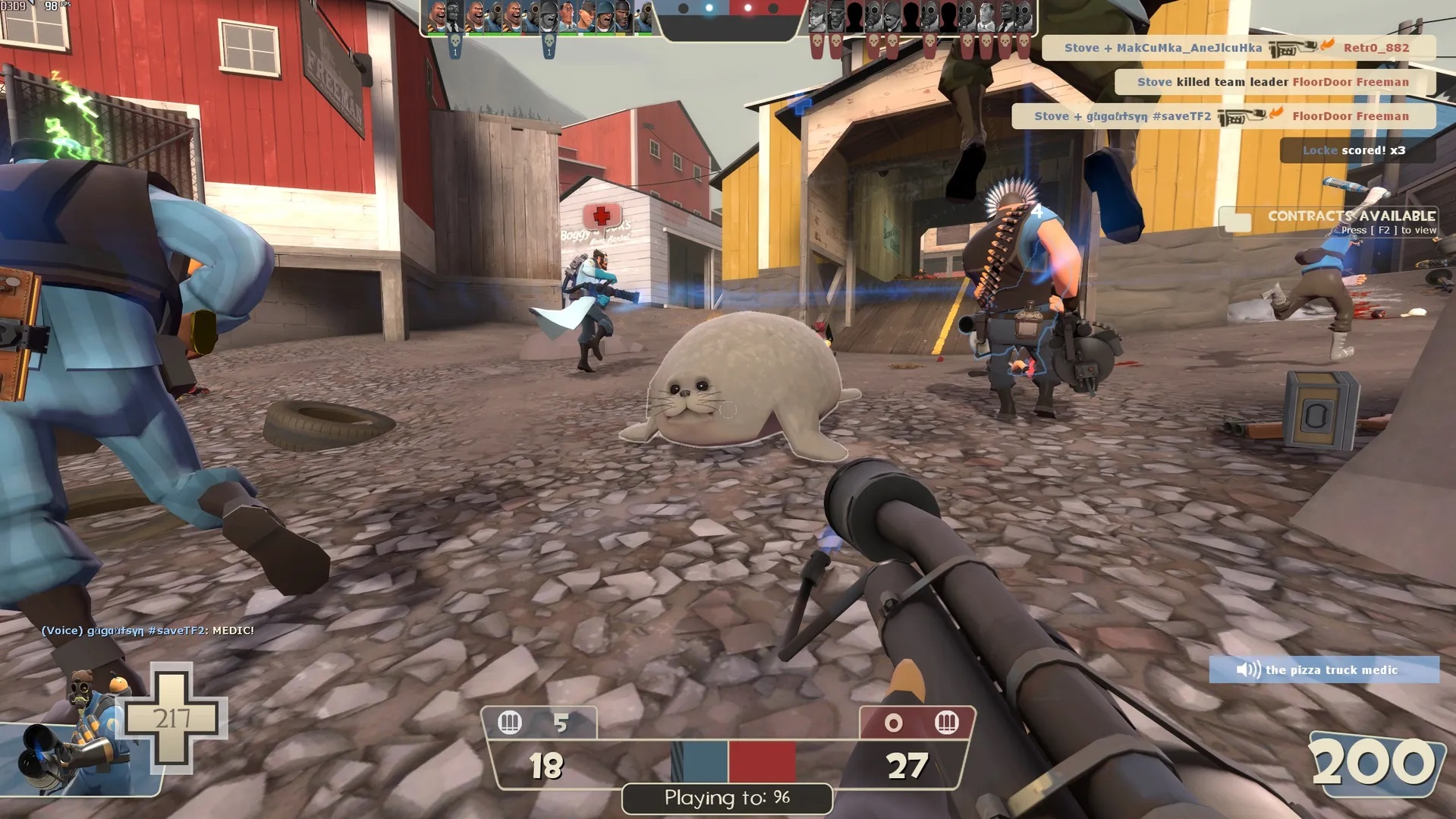
Highly competitive games have to contend with a whole extra layer of complexity: the metagame.
This refers to the way competitive communities can evolve beyond the game’s initial conditions (and is often the fastest way to determine what needs patching).
Say a new Fighting game comes out, and everyone notices that attack X with character A is very powerful—they quickly become the most popular character. But, the overall weaker character B has the otherwise useless attack Y which just happens to hard-counter attack X.
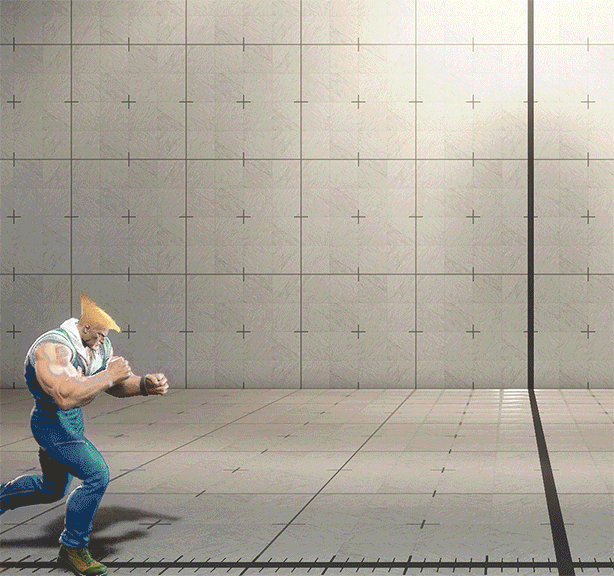
Over time, more people will start to pick up character B to deal with all the character A players. The inferior attack on the inferior character now brings a comparable amount of success—but only due to character A’s heavy popularity in the metagame.
So, what do you patch…
The first attack? The second? Or both?
Or do you buff a third character, to create a rock-paper-scissors relationship?
But what if your game has 37 characters instead?
These kinds of scenarios make it clear why, without patches, some games (especially those with heavy PvP and co-op dynamics) would simply die.
4. Create long-term self-improvement goals for players
One clever way to retain players is simply to make a game that never ends.
There is no final boss or last level in Valorant, or Fortnite, or…chess. You can always come back for more, as long as there’s a healthy community of other players to join.
Games built around these kinds of goals are essentially a form of infinite player progression (with diminishing returns).
Team-based games like League of Legends even let you share a victory with all of your teammates (or argue over who made the most mistakes):

Competitive multiplayer games also come with the built-in long-term goal of being #1.
The biggest reward doesn’t come from the game’s built-in challenges, but from those players pose to each other.
An effective way to implement this strategy is using a leaderboard:

(ARMS’s leaderboard includes enough useful information without cluttering up the screen or losing any style points.)
The goal is to compare players’ skill levels, but since that can be incredibly subjective, we need to quantify it.
Note: An effective leaderboard should track players’ overall ranking and display some key details about their accomplishments or choices (score/characters/vehicles/etc.).
Ever-changing rankings also remind players that their position isn’t set in stone. Even #1 can be overtaken if they become complacent—continuous progression is naturally built in.
5. Establish a seasonal retention strategy
Some games use a seasonal structure where players compete under specific conditions, usually over 3-4-month cycles.
If your game is already using some form of scoreboard or leaderboard, you can improve its effectiveness by resetting it seasonally, like a mandala.
Diablo IV is a great example of how seasonal content can complement other gameplay elements:

RPGs are all about character progression, but once you’ve reached the end of your skill tree and maximized your equipment, what is there to gain by playing even more?
Seasonal leaderboards give players an excuse to jump back in when they’ve already done everything else worth doing.
For games with little endgame content or that can’t simply release narrative updates, it’s one of the best options for player retention:

Another advantage of adopting seasons is that seasonal content pairs well with balance patches.
Each new season calls together all the most invested, experienced players to try out the new playable content—so they also double as giant community beta tests. (These diehard fans will also be the quickest to hone in on any new overpowered item or ability.)
6. Release new content all the time
A predictable supply of SHINY NEW CONTENT is enough to bring many players back to an experience they already enjoyed the first time.
If possible, give players some advance notice about upcoming modes, so they can start to build anticipation early:

Giving players something to look forward to also makes it easier to justify investing their time in the game. The promise of future content means there will always be another horizon to explore or sadistic enemy to defeat.
Exciting content can breathe new life into almost any game, but MMOs like WoW go even further by tying their gameplay experience to real-world social groups with collaborative events like raids.
Any serious raid requires…
- Gathering the whole team at a specific time, across who-knows-how-many time zones.
- A significant time investment from every player.
- Complete coordination between combat roles (DPS/tanks/healers/etc.)
- Continuous communication about tactics, enemy behavior, and who needs to be healed right now
Whenever new socially connected content appears, it’s not just a fun adventure for you—it’s a national event. You might be sharing the experience with people all over the world.
When I worked on WoW’s Battle for Azeroth expansion, we did exactly this (with a unique twist):

On top of adding more content through artifacts—special equipment with their own skill trees and associated quests—we also introduced War Mode, a separate PvP mode with kill streak buffs and unique abilities.
It’s a clever way to recontextualize mechanics from other genres in an MMORPG world.
Caveat: DLC should never be artificially partitioned from the main game just to charge for it separately.
This will only come off as a money grab. If you can include critical content in the game’s first iteration, you should.
Downloadable content should be additional when it requires extra time and resources to develop, or the studio risks burning out its team just to save on short-term costs.
This contributes to the crunch time culture I experienced often back in my Blizzard days.
7. Mix in alternative game modes for variety
The next retention strategy is to leverage alternative game modes, allowing the designer to experiment with and reimagine an already strong gameplay experience.
Even if you’ve found one mode to be the overall most popular or fulfilling, adding side attractions and potentially less serious gameplay options can really help flesh out the entire experience, potentially attracting a wider range of players.
Think of WoW’s Timewalker Dungeons or Legends of Runeterra’s single-player PvE Path of Champions:

This is no different than going to the theater to watch a movie, where the popcorn, unreasonably large drink and comfy reclining seat are all important secondary aspects that make the experience more than the sum of its parts.
Another example is how All-Random, All Mid in League of Legends lets players jump into a quick game without the usual 1-hour investment. It’s generally more laid-back and involves less planning than the other modes, which is a relief in such a cutthroat environment.

Many games use alternative modes to help players take a break from the more serious main progression, except they’ll spend their break time inside your game. 😉
For example, Ocarina of Time just wouldn’t be the same without the fishing minigame:
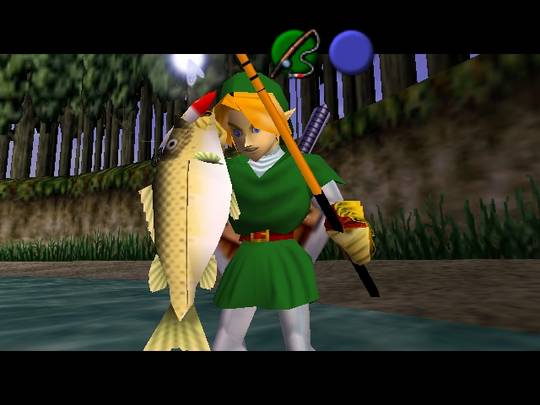
In rare cases, it’s even possible for an alternative mode to become more popular than the main one…
- Most early FPS games were focused on PvE (Doom, Quake), but the genre has shifted to become nearly synonymous with PvP.
- DOTA started as a modded map for WarCraft III, and LoL later spun off from DOTA.
- Counter-Strike was originally a Half-Life mod.
—
The following 10 tactics leverage human psychology to incentivizing the player to invest more time in a game—but these don’t to add much to the gameplay itself.
Meaning, that if the game doesn’t stand on its own, these won’t work.
Start here once you’ve assessed which core strategies fit your approach and done everything you can to fine-tune your game.
Disclaimer: These strategies are manipulative by nature, so please use them ethically with care.
8. Provide incentives just for logging in
Daily login rewards are the perfect way to get players in the door—they offer small amounts of progress just for opening the app each day.
The vast majority of mobile apps include some sort of daily reward, according to the statistics on player retention strategies applied worldwide:

Since these are daily incentives, players also know exactly how long they’ll have to wait until the next reward.
Over time, it’s easy for the game to become embedded in their daily routine.
Once they’re already playing the game, players may find they want to revisit another part of it. It’s chasing the “Now that I’m already here, I might as well…” mentality.
Have you ever walked into a grocery store and bought only what you went in for? Me neither.
Some games also use time-limited promotions to offer better odds or prizes.
Fate: Grand Order introduced Banner Days, which double the usual rate to receive a special item, and its promotional events often have exclusive characters:

9. Incentivize gameplay frequency
While daily login rewards are most common in mobile games, daily gameplay rewards show up more often in the more elaborate kinds of games you’d tend to find on PC or consoles.
For example, daily quests, popularized by WoW (below) and many other MMOs, provide a consistent source of bite-sized content to bring players back on a reliable schedule.

There’s also evidence that console players stick around longer even for the same game. Look at the huge difference between Fortnite’s player retention across platforms:

Though we can’t draw industry-wide conclusions from one game’s data, it does make sense—mobile experiences tend to be more focused on attracting new players. In contrast, console games expect players to stay around for longer (since they paid upfront).
Daily gameplay rewards can also tie into a game’s other social elements, incentivizing players to stay online long enough for friends to rope them into dungeons, raids, PvP, etc.
If you know how many players usually sign in for a daily quest, you can build them around teamwork and multiple class requirements—justifying even greater rewards.
Then there’s Meditations—it’s an initiative created by Rami Ismail and 355 other game developers to make one unique game every day:

In this case, the daily reward for these players is a brand new game from designers they already trust; it’s more of a real-life quest.
10. Add idle benefits that reward players without interaction
Idle benefits build up on their own with little to no input. It’s like passive income!
This kind of economy design incentivizes players to stay with a game by rewarding them for a minimal amount of activity:

Once the system is ready, all they have to do is watch the numbers go up—but that’s the point.
Idle games are chill. This isn’t a FromSoftware boss battle; you’re supposed to feel relaxed.
Here’s a helpful analysis of the psychology behind incremental games:
Adding idle systems to existing games can also help increase player retention by further rewarding players for the time they’re already spending in-game.
WoW’s Warlords of Draenor expansion did this by adding the Barracks System:
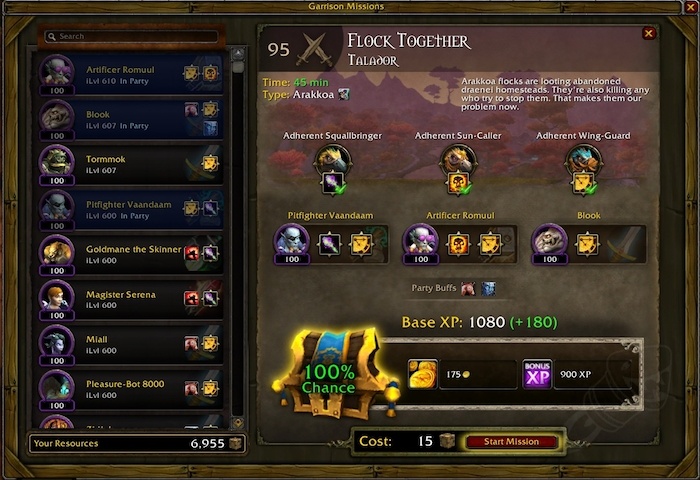
It gives players followers that can be sent on tasks to bring back loot after 2-8 hours. Optimizing this minigame creates a long-term investment in regular play even when not engaging in actual gameplay.
Idle rewards also pair nicely with daily login or gameplay rewards, since they just add to the pile of reasons for players to sign back in.
Caveat: Don’t make the idle benefits more attractive than the active gameplay ones.
If players stand to gain more by managing idle systems than playing the rest of the game, some might just not bother with the latter.
11. Deter them from not playing
Then there’s the opposite approach: disincentivize idleness.
Creating a sense of urgency or FOMO in players is an effective, if slightly hostile, way to increase player retention.
Famously, the Tamagotchi would punish players for not logging in for too long. Your pet would die if you failed to feed or clean up after it for a few days.
Similarly, the introduction of holidays, events and banners in games like Fate: Grand Order has the side effect of punishing players who don’t show up to engage with the rewarding content.
It feels like missing a huge sale at your favorite store—and the desire to avoid that feeling is what makes this an effective player retention strategy.
Caveat: Don’t get too extreme with the punishment.
For example, Upsilon Circuit takes perma-death to the next level: once you die, you can never play the game again:

It makes sense to want to test out this novel concept, but there’s a reason it hasn’t been done before (and Upsilon Circuit has to constantly replenish teammates to compensate for it).
The goal of idle punishment isn’t to frustrate players, but to provide a clear deterrent. Understanding what can harm your digital creature will shape your behavior to take better care of it.
Otherwise, you’ll completely disincentivize players to keep playing your game.
12. Retain new players with first-recharge rewards
These next two are somewhat questionable forms of whale-based retention—strategies that depend on the few players who spend far more than average (sometimes 50-70% of a mobile game’s in-app revenue).
Depending on your beliefs, this is in the moral grey area. So handle these with care.
First-recharge rewards are unusually plentiful bonuses. To break players’ internal resistance to parting with any amount of money, the game offers them a ridiculously good one-time deal.

This strategy is particularly common in games that are heavily monetized or dependent on repeat in-game purchases.
It serves the same purpose as offering a free sample.
For instance, across all genres of mobile games, the first few days of gameplay are when most players decide whether they’re going to continue with the game or drop it:
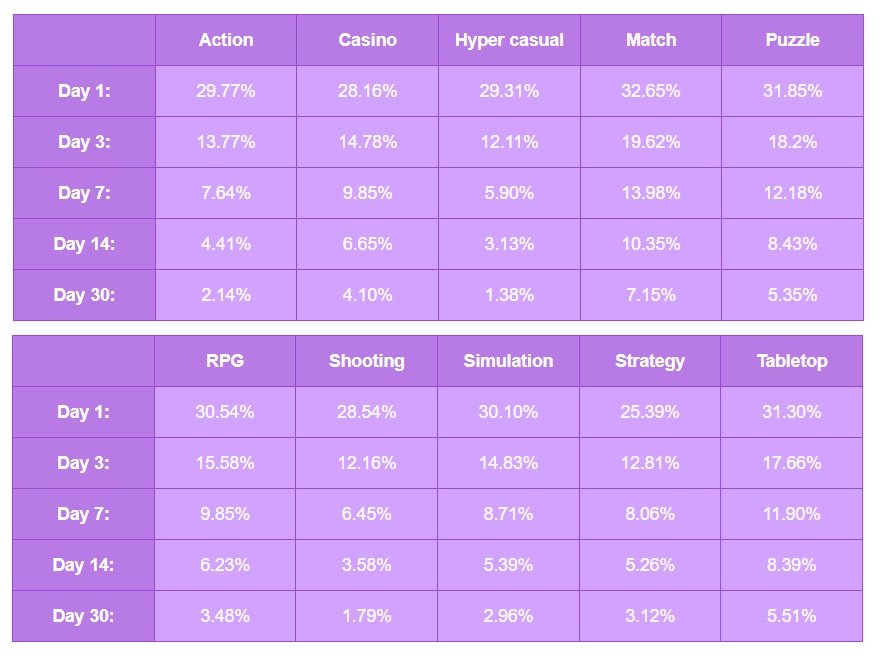
…So it’s this short window of time that these bonuses aim to take advantage of.
First-recharge rewards are part of the arms race in the war of shortening attention spans. Few players will stick around, so most of the competition aim to dazzle them immediately.
Generally, once players have already dropped some money on the system, they’ll feel more comfortable parting with more in the future.
It’s the classic foot-in-the-door psychological technique. One study showed that this effect extends into computer-mediated communication, essentially mirroring its use in games:

Since this strategy is really about player attraction, it’s the perfect complement to the rest of this list. Once a new player shows up, any of the other 16 strategies can spring into action.
If you want to learn more about how these reward systems work, this guide on making a profitable mobile game goes into much greater detail.
13. Use cumulative recharge rewards to incentivize the most loyal players
Rather than focusing on grabbing new players, some games offer cumulative recharge rewards (luxury cosmetics, in-game power, etc.) for hitting lifetime spending thresholds.
Honkai: Star Rail, essentially the sister game to Genshin Impact, has multiple layers of rewards you can build toward gradually:

This strategy works especially well in games that have been out for a while, have tons of content, or are built around PvP competition.
Another example of this is Yu-Gi-Oh Duel Links—if you spend enough per month, the game grants you extra rewards:

The prizes also refresh each month, rewarding players for maintaining their spending habit.
Caveat: Make sure your in-game purchases have gameplay-based alternatives. If the grind for rewards is overly time-consuming, it essentially becomes a rigged game.
Just do the exact opposite of this:

14. Entice players with gacha game system and content
Gacha game is the natural evolution of all the psychological retention tactics I’ve discussed so far.
They’re built around collectibles, and are usually RPGs with numerous playable anime-styled characters.
The concept originates from these popular Japanese capsule toys:

Much like their vending machine ancestors, gacha games grant players high-value rewards at low-to-ludicrously-low odds. (Some also offer large packs of “re-rolls” to help offset this fact.)
Anyone who grew up collecting playing cards knows how this feels. You can’t stop now…what if that holographic Charizard is in the next one?

Implementing gacha content also allows you to…
- Continually expand the roster of collectible characters
- Introduce timed events with exclusive rewards (e.g. Christmas-themed characters)
- Tie players’ drive to collect stuff with their desire to feel powerful in the game
- Charge each player repeatedly
If there’s one name you’ve already heard in this genre? …it’s probably Genshin Impact:

The game hands out containers with a chance to grant upgrade items or new characters—each with a unique set of abilities, rarity and stylized appearance to fulfill a range of player intentions.
Another common feature of gacha games is a pity system: after enough missed re-rolls, the game shows mercy and rewards you anyway.
Genshin Impact uses a more complex version, with “soft pity” gradually increasing the odds until “hard pity” triggers the reward:

If any of this sounds eerily familiar, it’s because you’ve probably encountered another form of gacha-style content—loot boxes:

Loot boxes tend to contain nonessentials like extra guns or costumes, whereas the gacha part of a gacha game is usually something essential, like the playable characters.
Caveat: Be careful not to accidentally create something addictive (especially since some of the customers will be children).
There’s research showing that “loot box purchasing has been found to be positively correlated with problem gambling severity in more than a dozen empirical studies”:

Several EU countries are deliberating over whether to heavily regulate or outright ban these mechanics:

Even the Chinese government has implemented various loot box-related bans and restrictions:

15. Add an auction house (with limits!)
Going once; going twice; sold—to the person with no interest in actually playing Diablo!
Auction houses are fairly self-explanatory, but also carry the risk of becoming a parasite that overtakes their host game.
Warcraft, Final Fantasy and many more once allowed uncapped auction item placement, purchase and profits, leading to players min-maxing the auction house and being rewarded for resource monopolizing and price gouging.
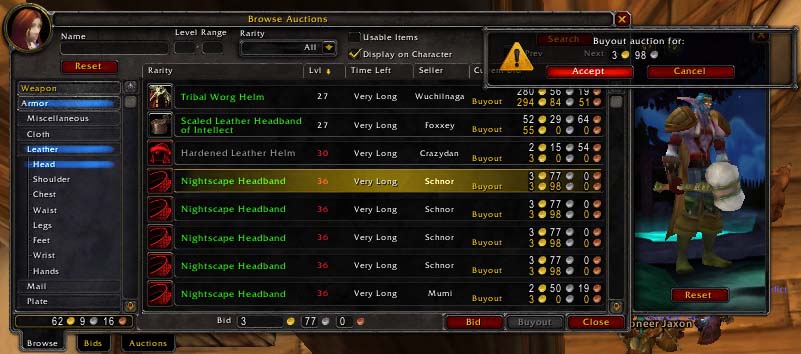
Without strict limitations, an auction house can threaten to undermine the core loop if players spend more time auctioning than actually playing the game.
Caveat: Diablo III’s auction house is a cautionary tale—don’t do any of this:
16. Make your game an emblem of social prestige
Some games become such a big deal that simply participating in the phenomenon can offer social prestige, much like bringing a rare or popular game to a social gathering.
Games like Rise of Kingdoms and Clash of Clans also let higher-paying members buy more powerful gear and gain access to benefits like these:
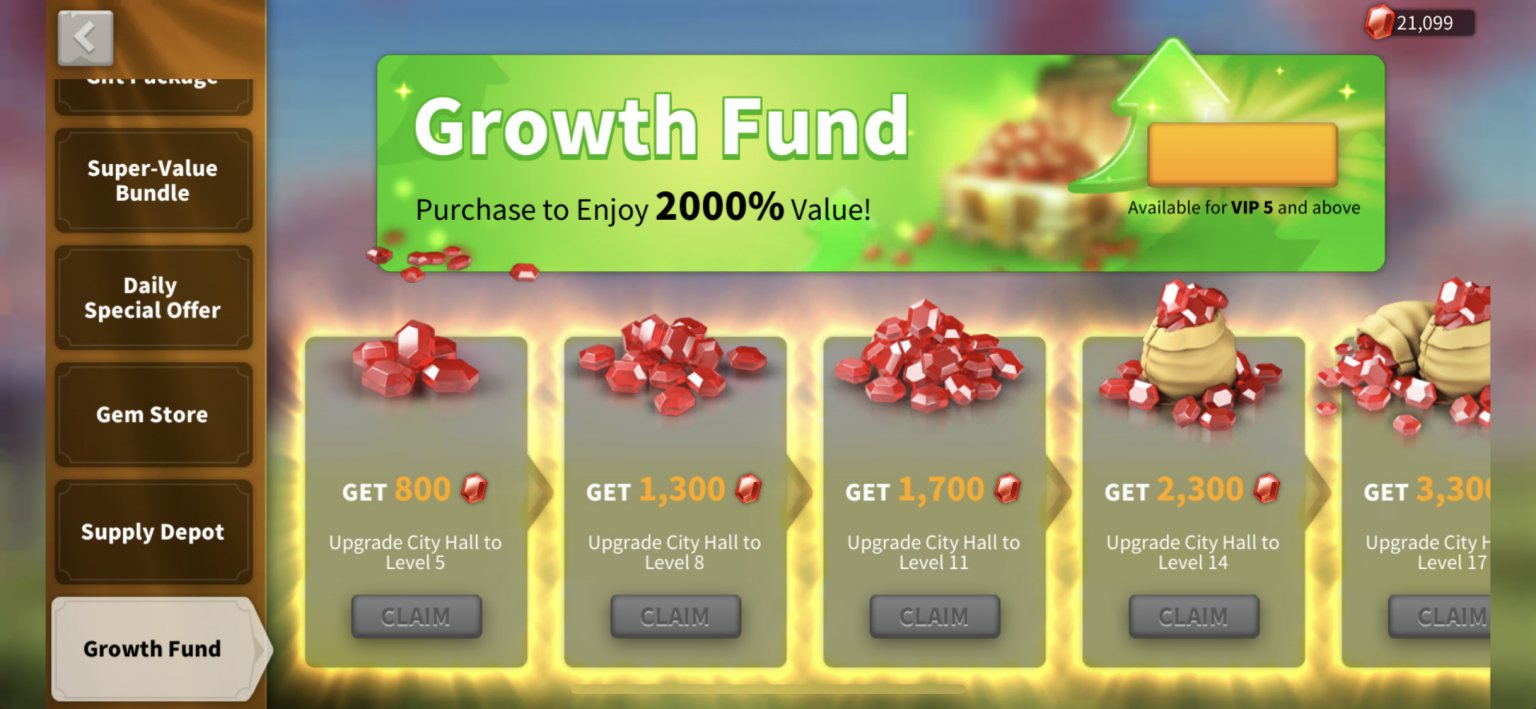
This is another form of social capital—your impact in the game directly brings value to your team.
The ideal situation, though, is for in-game skill to translate into real-life fame and fortune. That’s certainly the case with Faker, the first inductee into Riot’s Hall of Legends:
17. Incorporating social pressure can be effective (but dangerous)
Some games are so dependent on their social elements that not participating can actually hurt other players’ experience:
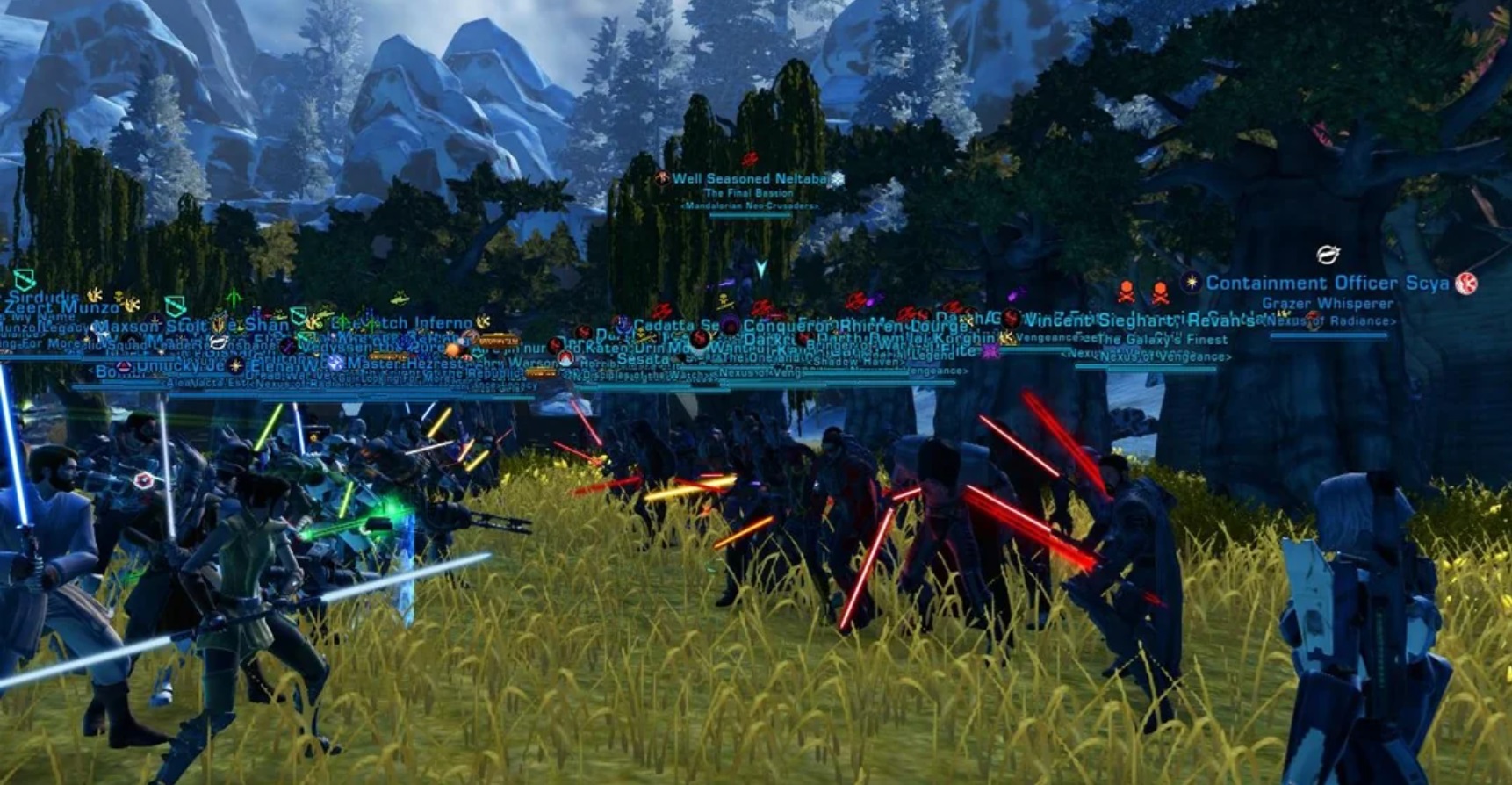
For instance, once you’re a member of a raiding guild (as in WoW, Final Fantasy 11 or Everquest), you’re expected to show up consistently and spend many hours overcoming challenging content together.
Speaking of pressure, here’s what a raid looks like in Final Fantasy 14:

Caveat: Don’t let the virtual pressure affect players’ real lives.
Too much social pressure can push players to skip real-life social events to join in-game ones.
It’s of course possible to make lifelong friends through these experiences, but don’t forget about all the adventures that await you in The Outside Lands!
Final Thoughts on improving player retention
These 17 strategies are all useful places to start—but there are nearly as many approaches to retaining players as there are games themselves.
Don’t be afraid to get creative! At some point, every one of these strategies was new and untested.
And remember, when in doubt—whatever makes the game more fun is probably the best path to player retention.
If there are any worthy player retention strategies, tactics, or tips that’s worth mentioning that I haven’t included in the list, feel free to share in the comments and I will consider adding them in and credit you.












